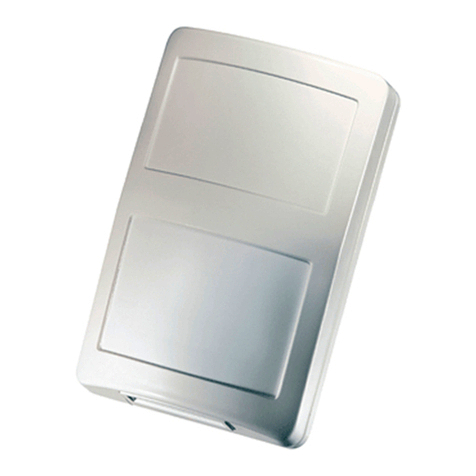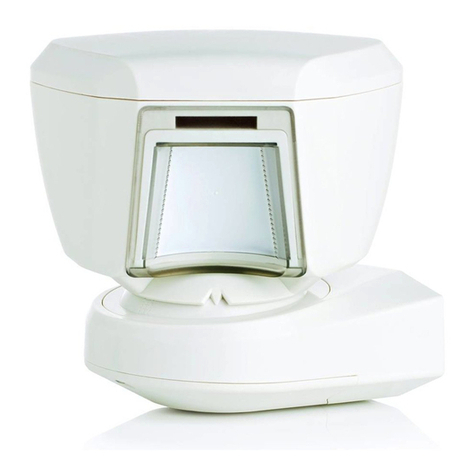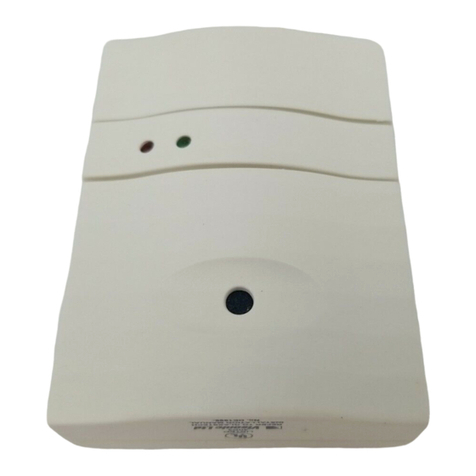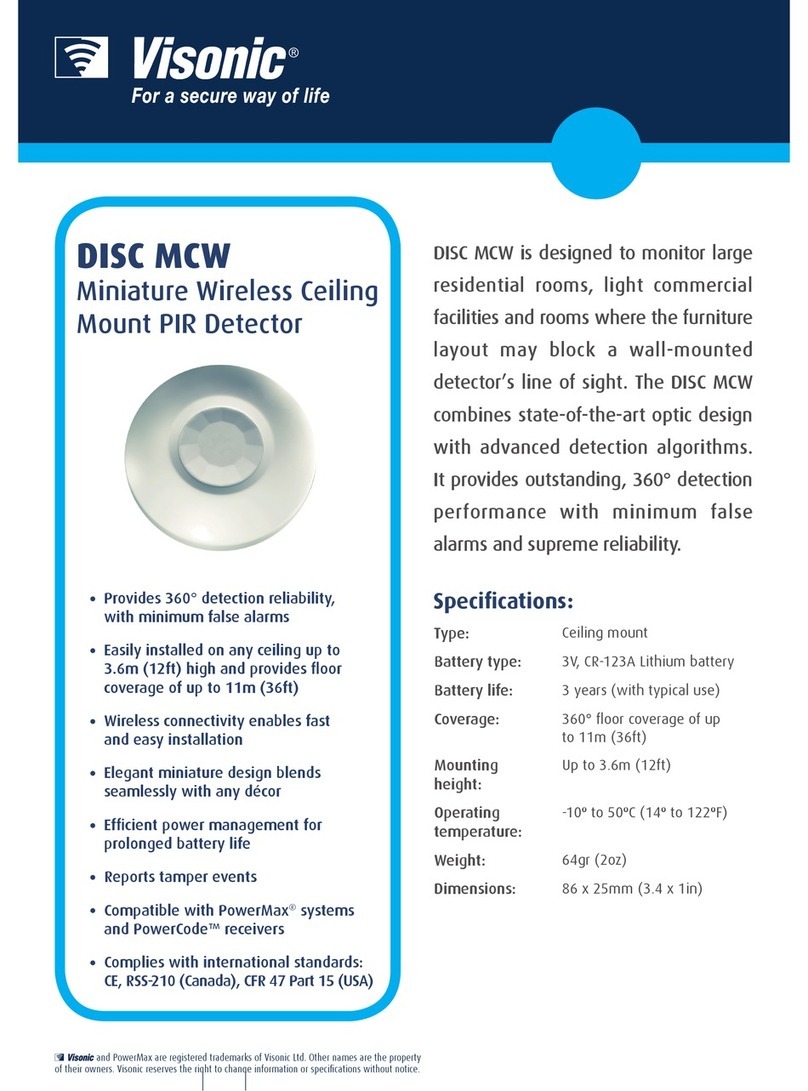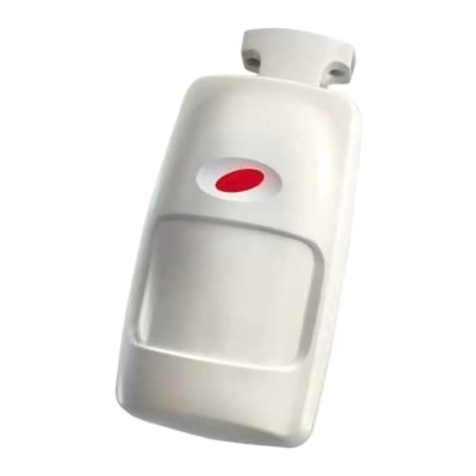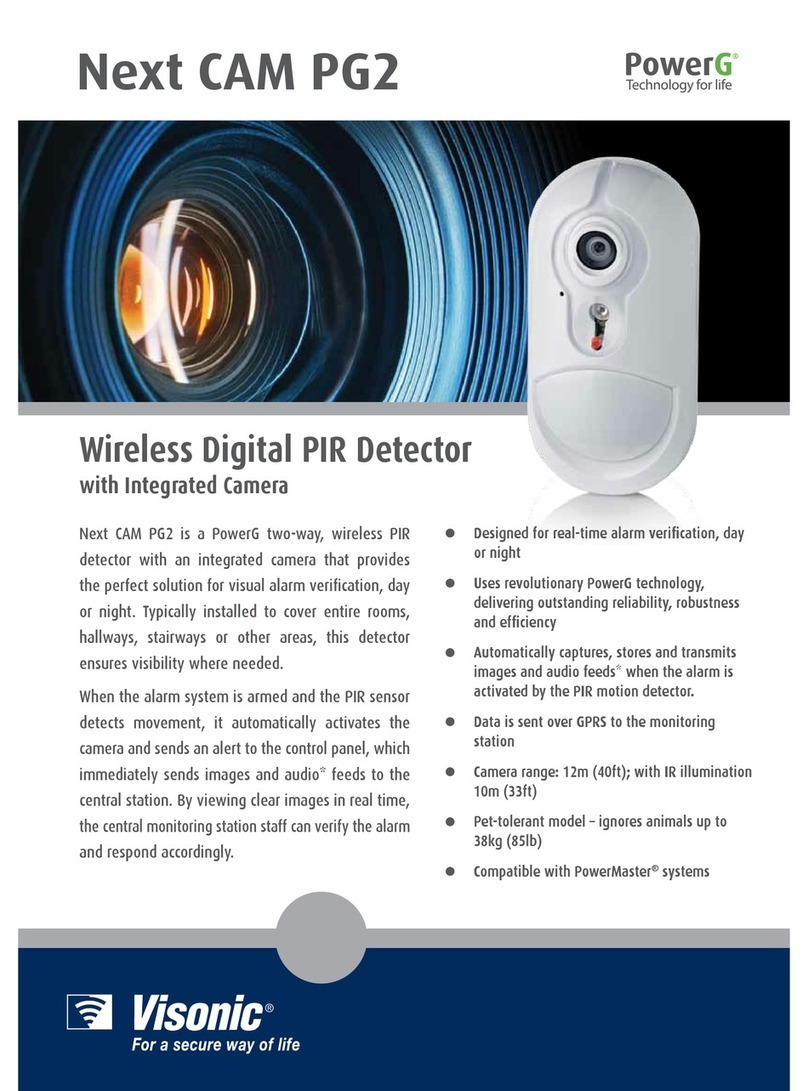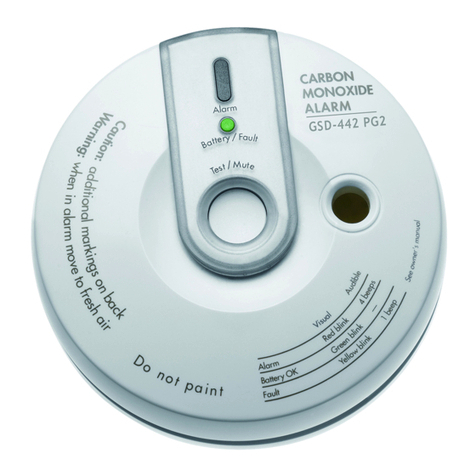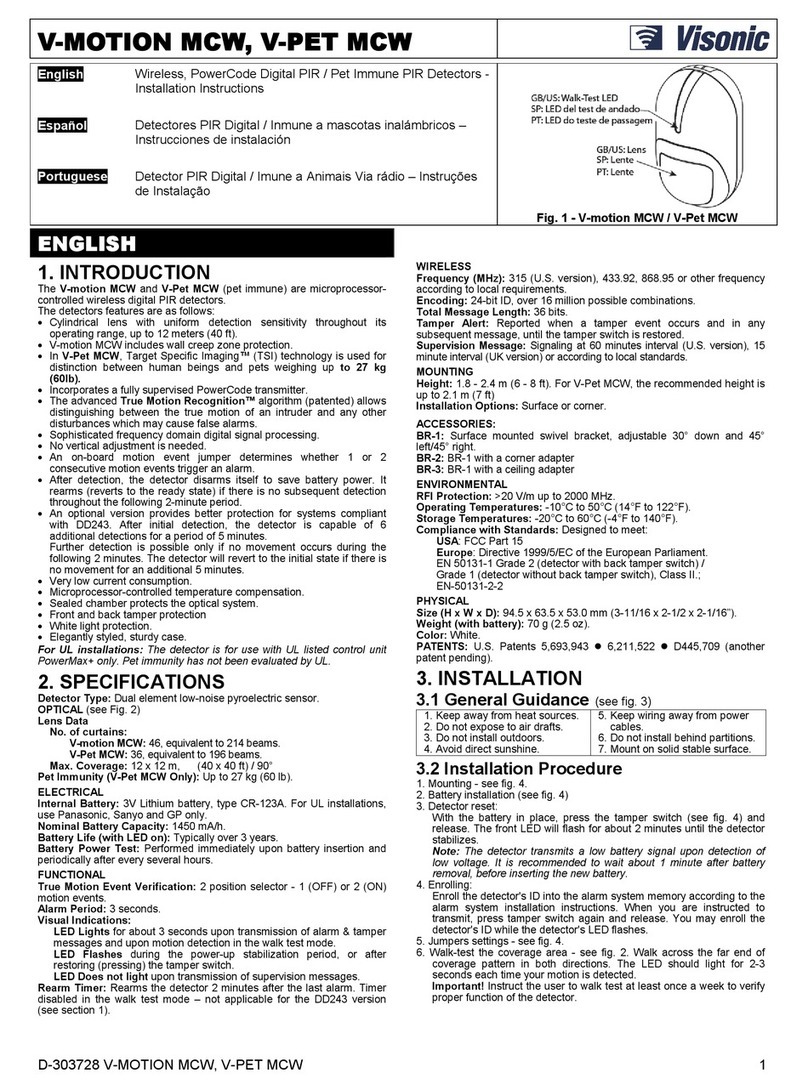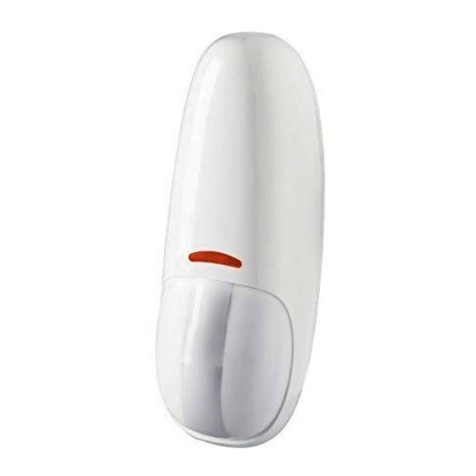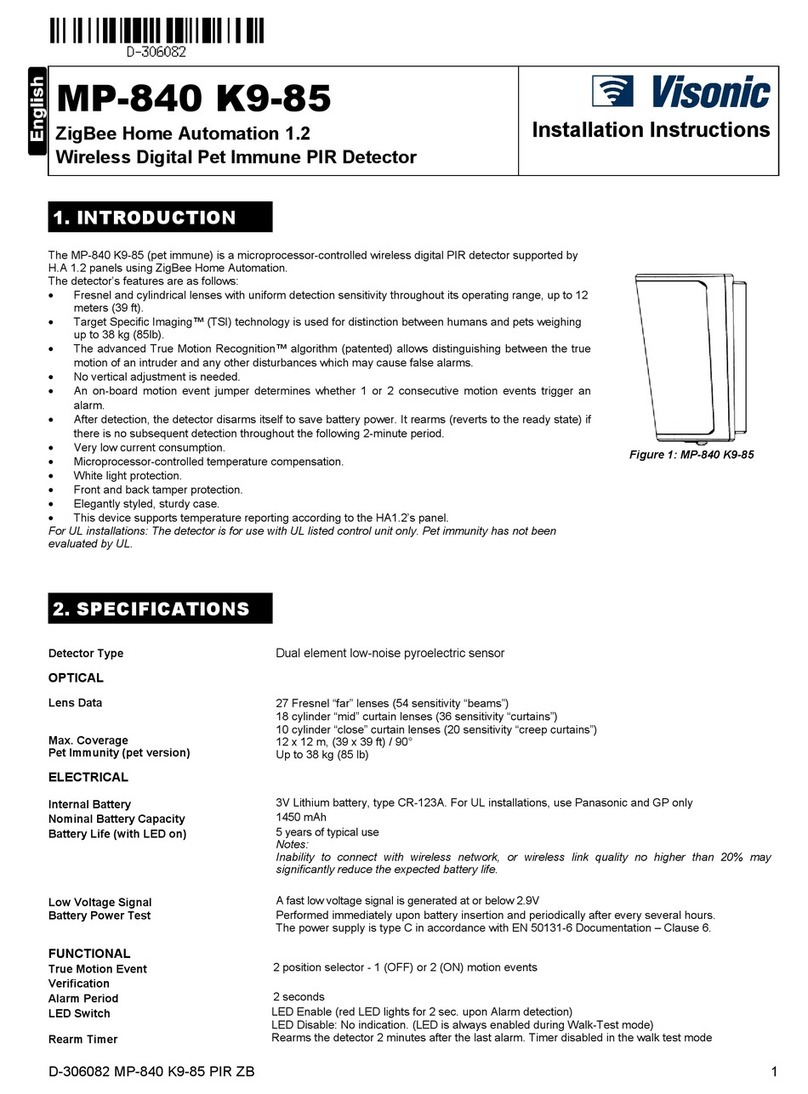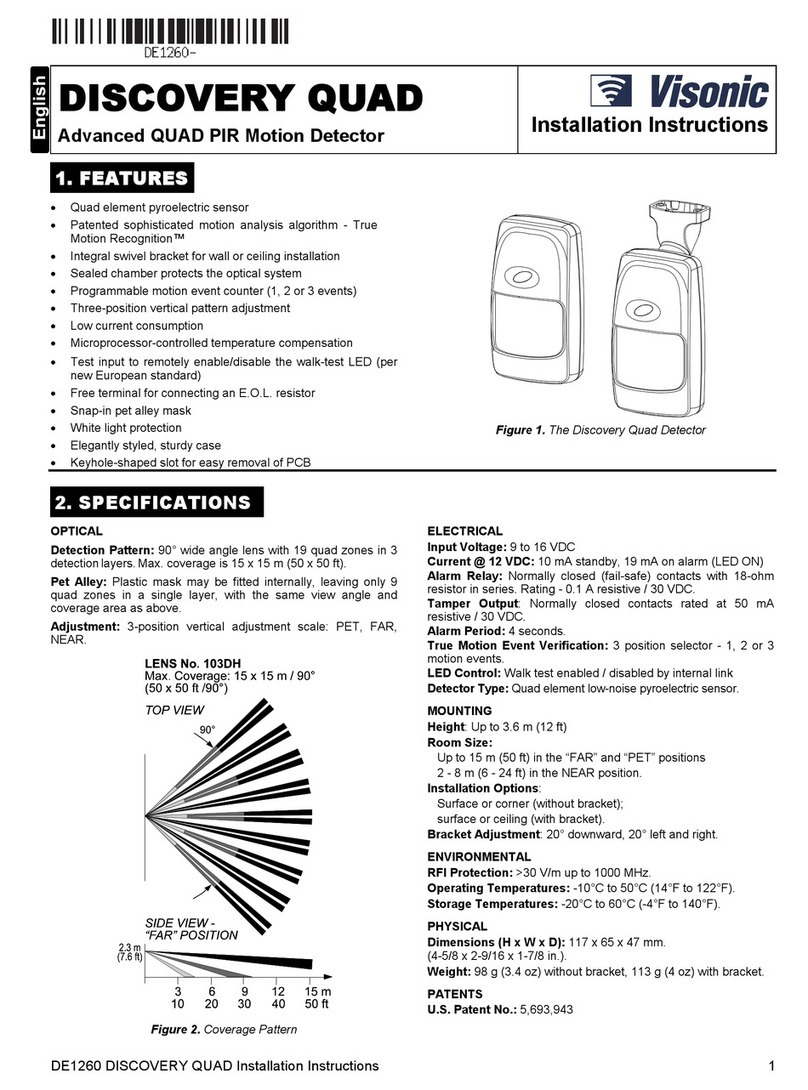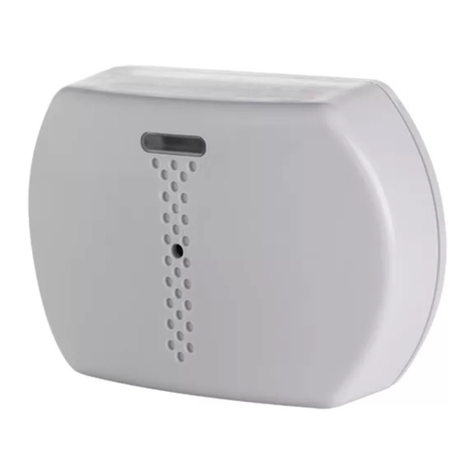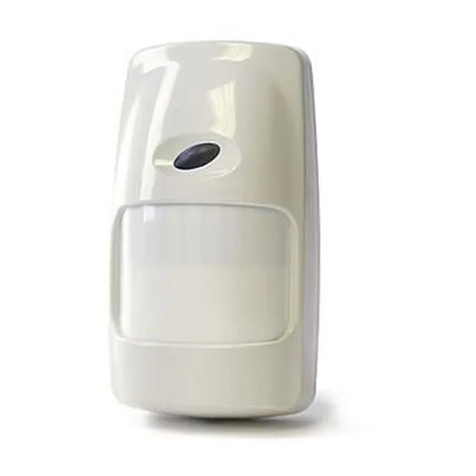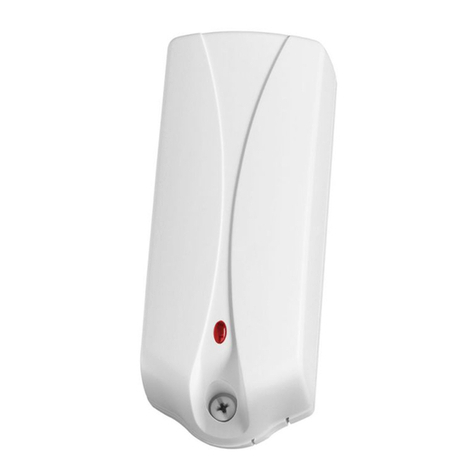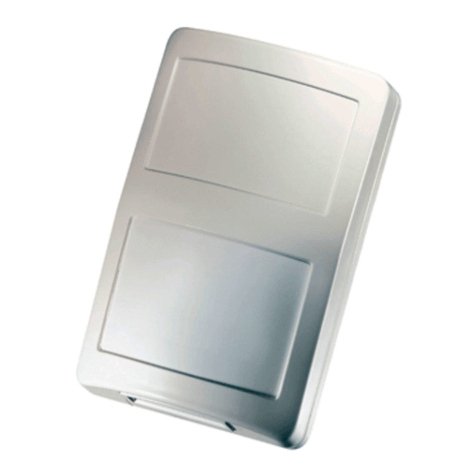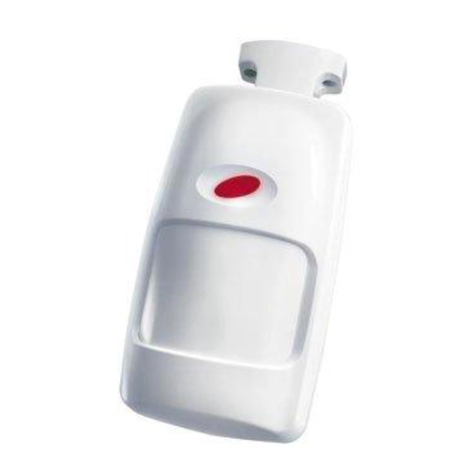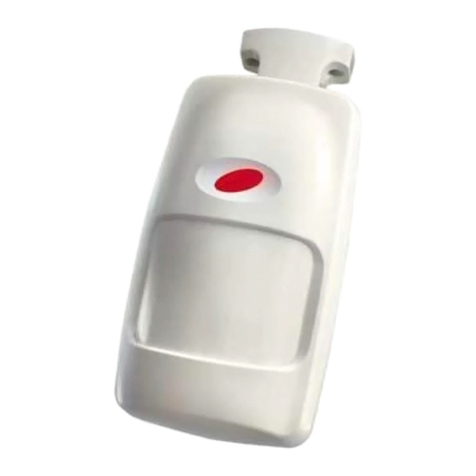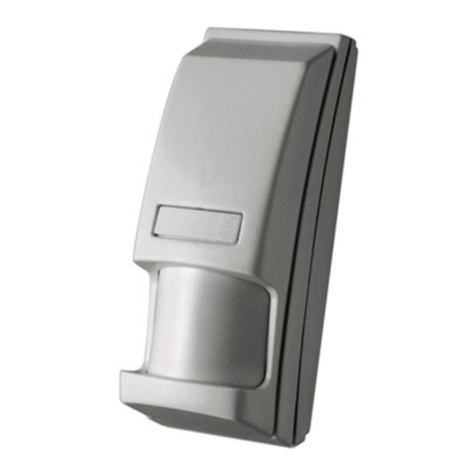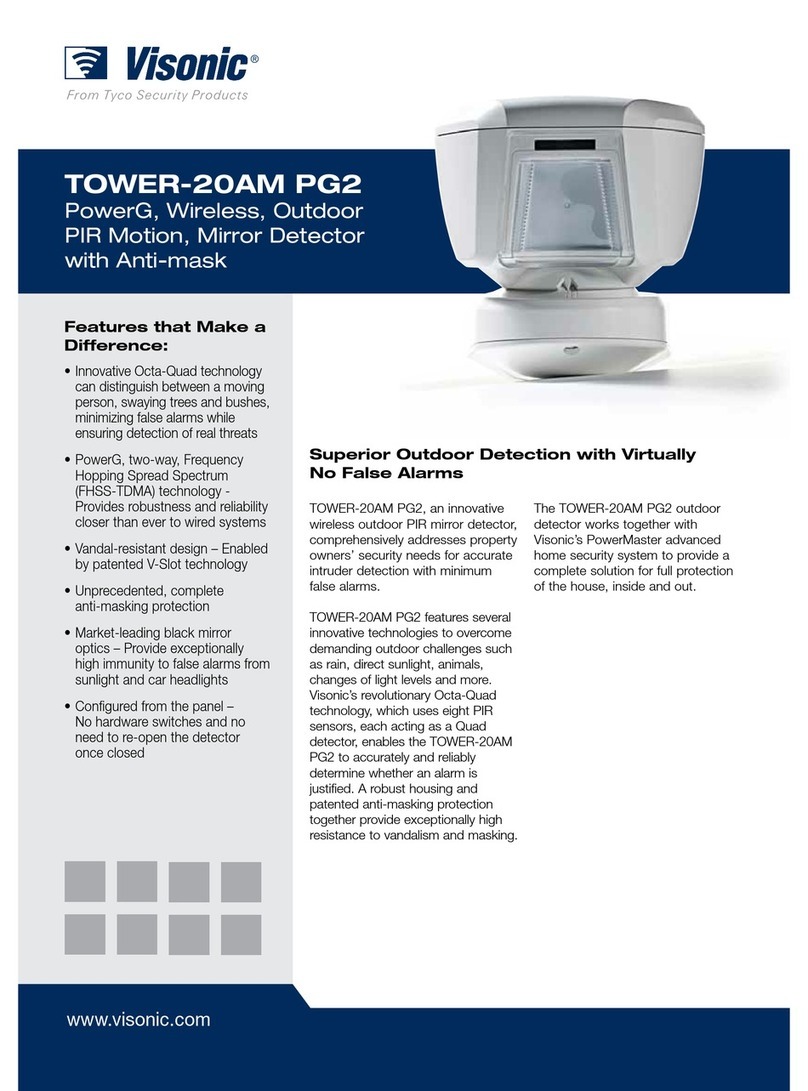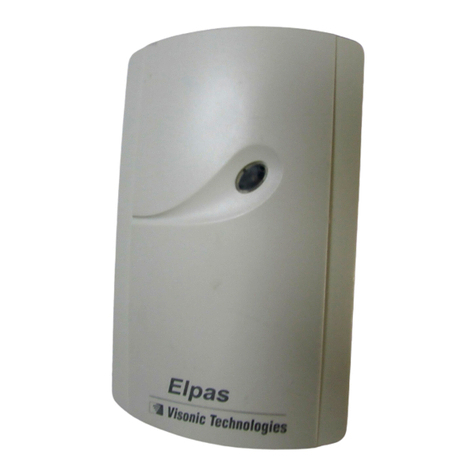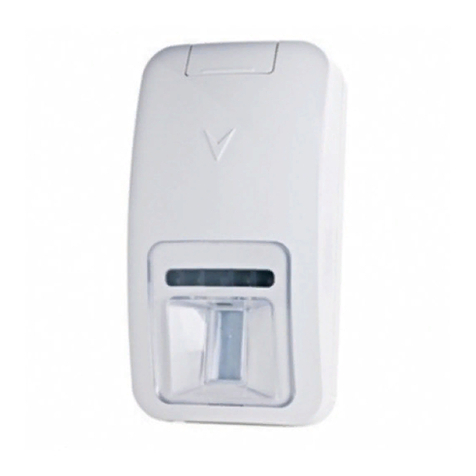
4DE3582
For rapid walk testing of the coverage pattern, you must eliminate
the 2 minute inhibit interval between successive alarms. The
NORM/TEST selector, when set to TEST, overrides the 2-minute
rearm timer, and also sets the pulse counter to 1 PULSE.
Remember that in the TEST mode, tamper and low battery alerts
will be transmitted at 1/2 second intervals instead of the usual
2-minute intervals. When the selector is reset to NORM, the
rearm timer reverts to normal operation.
TEST Position Setting the jumper as shown
overrides the rearm timer and the pulse counter,
allowing you to walk test the detector rapidly.
NORMAL Position: Setting the jumper as
shown re-enables the 2-minute rearm timer and
the pulse counter.
3.10 Final Testing
A. Snap the battery clip onto the 9 Volt alkaline or lithium battery
and allow ten minutes for the unit to stabilize before testing.
B. Adjust the vertical calibration position per Para. 3.8.
C. Set the Normal/Test selector to TEST.
D. Put the cover back in place.
E. Walk-test the entire protected area by walking slowly across
it, observing the LED. The LED lights whenever you cross a
protective beam. Allow the unit to re-stabilize for 5 seconds
after each test.
F. In pet immune applications, continue the test by sending the
house pet into the protected area. Make sure it does not
trigger the detector by moving across the protected area and
by climbing on furniture within that area.
G. Remove the cover and set the pulse counter as required for
the particular application.
H. Set the NORMAL/TEST selector to NORM, mount the cover
and wait 5 minutes outside the coverage area. Then re-enter
the coverage area and verify that the LED lights (response will
be immediate only if the pulse counter is set to 1 pulse).
If you continue moving within the detector's field of view, the
LED will turn OFF and the unit will remain disabled as long as
movement continues, due to the 2-minute battery saving
rearm timer. The unit will be rearmed provided that no motion
is detected for approximately 2 minutes, and will again be
ready to detect and signal.
CAUTION: The range and coverage area of the unit should
be checked at least once a year. To assure proper
continuous function, the end user should be instructed to
perform a walk test at the far end of the area to assure an
alarm signal prior to each time the alarm system is armed.
4. LIMITATIONS AND WARNINGS
Visonic Ltd. wireless systems are very reliable and are tested to
high standards. However, due to their low transmitting power
(required by FCC and other regulatory authorities), there are
some limitations to be considered:
A. Receivers may be blocked by radio signals on or near their
operating frequencies, regardless of the code selected.
B. Receivers can only respond to one transmitted signal at a time.
C. Wireless equipment should be tested regularly (at least once
a week) to determine if there are sources of interference and
to protect against faults.
The 315 MHz version of this device complies with Part 15 of the FCC
Rules. Operation is subject to the following two conditions: (1) This
device may not cause harmful interference, and (2) This device must
accept any interference received, including interference that may
cause undesired operation.
WARNING! Changes or modifications to this unit not
expressly approved by the party responsible for compliance
could void the user's authority to operate the equipment.
The digital circuit of this device has been tested and found to comply
with the limits for a Class B digital device, pursuant to Part 15 of the
FCC Rules. These limits are designed to provide reasonable
protection against harmful interference in residential installations.
This equipment generates, uses and can radiate radio frequency
energy and, if not installed and used in accordance with the
instructions, may cause harmful interference to radio and television
reception. However, there is no guarantee that interference will not
occur in a particular installation. If this device does cause such
interference, which can be verified by turning the device off and on,
the user is encouraged to eliminate the interference by one or more
of the following measures:
– Re-orient or re-locate the receiving antenna.
– Increase the distance between the device and the receiver.
– Connect the device to an outlet on a circuit different from the one
which supplies power to the receiver.
– Consult the dealer or an experienced radio/TV technician.
WARRANTY
Visonic Ltd. and/or its subsidiaries and its affiliates ("the Manufacturer") warrants its
products hereinafter referred to as "the Product" or "Products" to be in conformance with
its own plans and specifications and to be free of defects in materials and workmanship
under normal use and service for a period of twelve months from the date of shipment by
the Manufacturer. The Manufacturer's obligations shall be limited within the warranty
period, at its option, to repair or replace the product or any part thereof. The Manufacturer
shall not be responsible for dismantling and/or reinstallation charges. To exercise the
warranty the product must be returned to the Manufacturer freight prepaid and insured.
This warranty does not apply in the following cases: improper installation, misuse,
failure to follow installation and operating instructions, alteration, abuse, accident or
tampering, and repair by anyone other than the Manufacturer.
This warranty is exclusive and expressly in lieu of all other warranties, obligations or
liabilities, whether written, oral, express or implied, including any warranty of
merchantability or fitness for a particular purpose, or otherwise. In no case shall the
Manufacturer be liable to anyone for any consequential or incidental damages for breach
of this warranty or any other warranties whatsoever, as aforesaid.
This warranty shall not be modified, varied or extended, and the Manufacturer does not
authorize any person to act on its behalf in the modification, variation or extension of this
warranty. This warranty shall apply to the Product only. All products, accessories or
attachments of others used in conjunction with the Product, including batteries, shall be
covered solely by their own warranty, if any. The Manufacturer shall not be liable for any
damage or loss whatsoever, whether directly, indirectly, incidentally, consequentially or
otherwise, caused by the malfunction of the Product due to products, accessories, or
attachments of others, including batteries, used in conjunction with the Products.
The Manufacturer does not represent that its Product may not be compromised and/or
circumvented, or that the Product will prevent any death, personal and/or bodily injury
and/or damage to property resulting from burglary, robbery, fire or otherwise, or that the
Product will in all cases provide adequate warning or protection. User understands that a
properly installed and maintained alarm may only reduce the risk of events such as
burglary, robbery, and fire without warning, but it is not insurance or a guarantee that such
will not occur or that there will be no death, personal damage and/or damage to property
as a result.
The Manufacturer shall have no liability for any death, personal and/or bodily injury
and/or damage to property or other loss whether direct, indirect, incidental,
consequential or otherwise, based on a claim that the Product failed to function.
However, if the Manufacturer is held liable, whether directly or indirectly, for any loss or
damage arising under this limited warranty or otherwise, regardless of cause or origin, the
Manufacturer's maximum liability shall not in any case exceed the purchase price of the
Product, which shall be fixed as liquidated damages and not as a penalty, and shall be the
complete and exclusive remedy against the Manufacturer.
Warning: The user should follow the installation and operation instructions and among
other things test the Product and the whole system at least once a week. For various
reasons, including, but not limited to, changes in environmental conditions, electric or
electronic disruptions and tampering, the Product may not perform as expected. The user
is advised to take all necessary precautions for his/her safety and the protection of his/her
property.
6/91
VISONIC LTD. (ISRAEL): P.O.B 22020 TEL-AVIV 61220 ISRAEL. PHONE: (972-3) 645-6789, FAX: (972-3) 645-6788
VISONIC INC. (U.S.A.): 10 NORTHWOOD DRIVE, BLOOMFIELD CT. 06002-1911. PHONE: (860) 243-0833, (800) 223-0020 FAX: (860) 242-8094
VISONIC LTD. (UK): FRASER ROAD, PRIORY BUSINESS PARK, BEDFORD MK44 3WH. PHONE: (0870) 7300800 FAX: (0870) 7300801
INTERNET: www.visonic.com
VISONIC LTD. 2001 K-980W DE3582- (REV. 2, 5/01)
